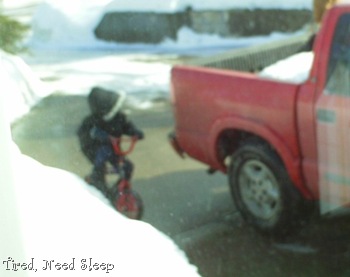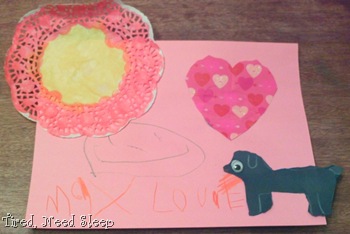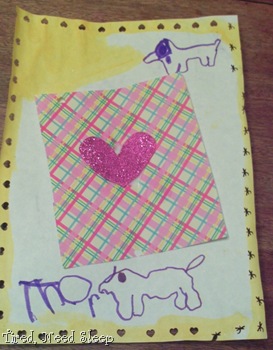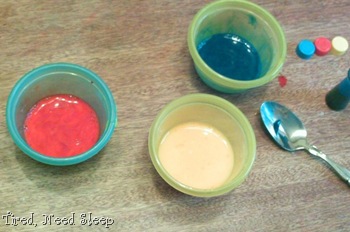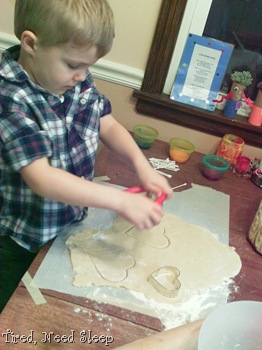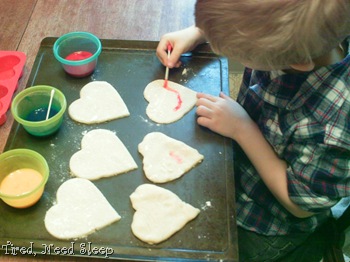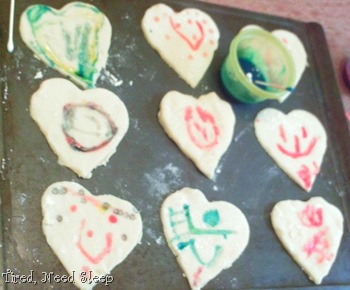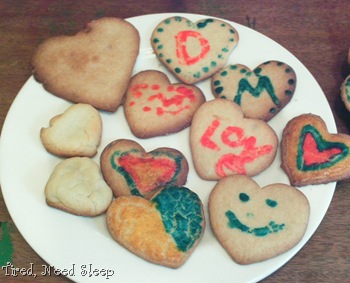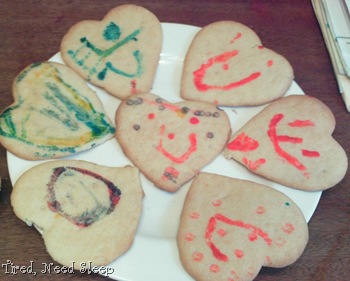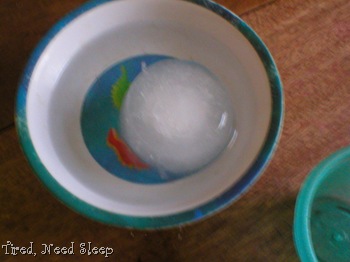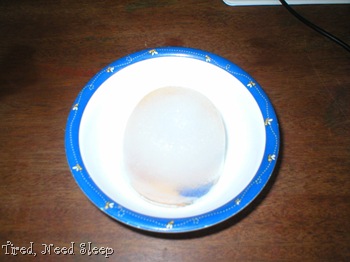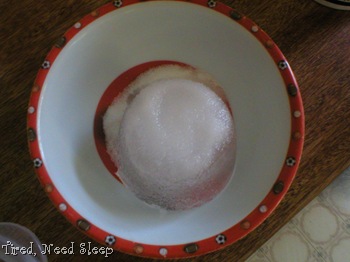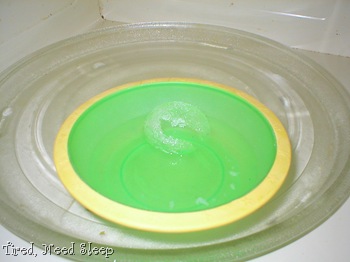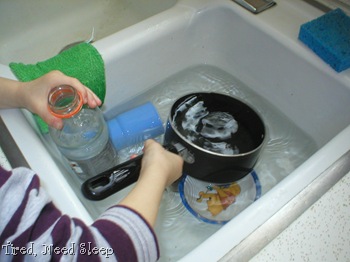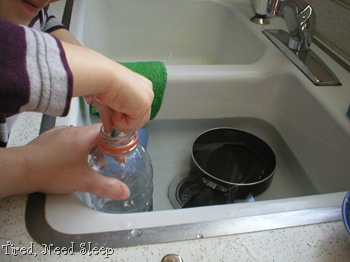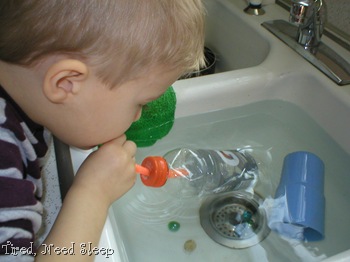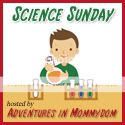
Both M and I really enjoyed our science lesson this week. Since we talked a bit about light and shadows, it would have been perfect for Groundhog’s day, but I was too late to realize it – darn!
First we got a flashlight that actually had batteries in it and works (hard to find around here lately with a crazy boy who constantly takes things apart). Then we made M’s bedroom as dark as possible. A dark room and a flashlight – this alone would have been enough to keep him happy for a while!
We went around the house gathering up a few things to see if light would shine through them or not. Our collection (with some random things on M’s dresser):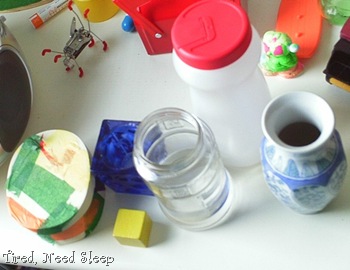 A wooden box, wooden block, blue glass votive holder, jar (with water), ceramic vase, a basket (not shown), and an empty coffee creamer bottle – we tried to find a variety of things that would block the light, let a little light through, and let all of the light through.
A wooden box, wooden block, blue glass votive holder, jar (with water), ceramic vase, a basket (not shown), and an empty coffee creamer bottle – we tried to find a variety of things that would block the light, let a little light through, and let all of the light through.
Once we had a good collection we began placing each one in front of the flashlight. 
For some items the light shone right through onto the wall. Some items lit up, but didn’t let much light through, and some items didn’t let any light through at all, but cast a shadow on the wall. At this point we talked about “transparent”, “translucent”, and “opaque”. M loves new vocabulary, and used each term correctly as we talked about the items. (That doesn’t mean it really stuck in his mind, but that’s ok!)
After a bit of talking about shadows, and some coaxing in the right direction, we realized that light does not go around things, but must travel in a straight line (you’d really think this was obvious, but not so much when you are trying to put it into words).
Next came the really fun part. We made a pinhole camera. Here’s a quick tutorial:
1. measure out 4 equal sections of cardstock (black if you have it), plus a little tab (you can see the pencil lines if you look really hard!):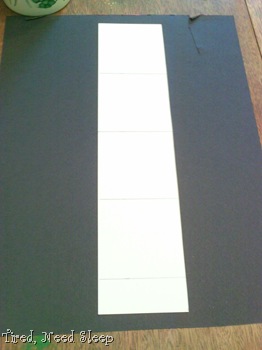
2. use double stick tape to line it with black paper. If you used black cardstock, skip this part: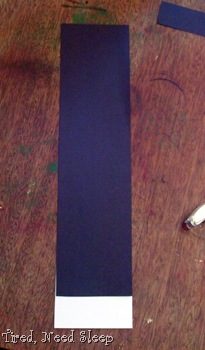
3. fold your cardstock along your lines, so that it forms a cube with an empty top and bottom, with the black on the inside. Use the tab to glue or tape in place: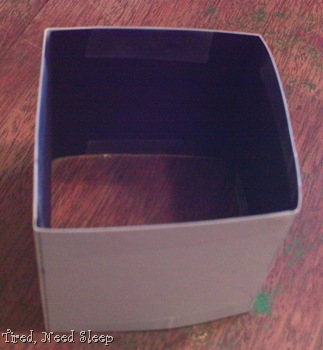
4. cover one empty end with tracing paper or parchment paper (it needs to be translucent enough that you can see through it pretty well, but don’t use something totally clear):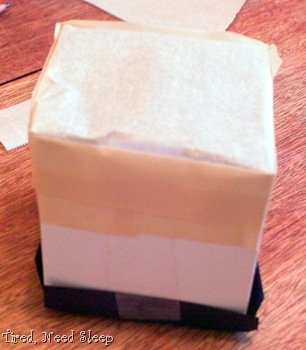
5. cover the other empty end with another piece of black paper.
6. poke a tiny hole in the middle of the black end: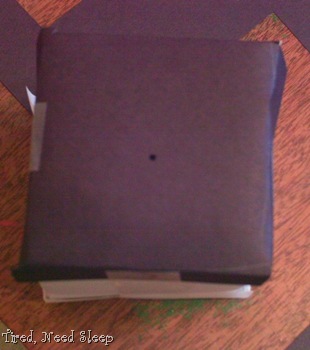
Ta, da! A pinhole camera!
We stood near a window, and pointed the tiny hole towards the window. Then we covered our heads and the camera with a thick towel, to block out all the light we could: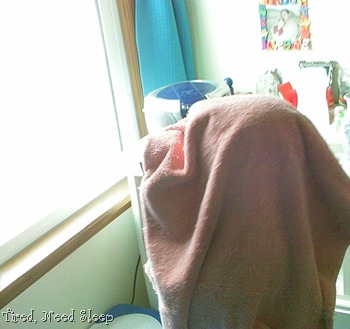
We looked at the parchment paper side and saw a picture of what was outside our window… upside down! The trees were upside down, M’s little sun catcher was upside down, and so on. It was very, very cool! There was no way for me to capture a photo of it though, so you will have to just imagine (or make one for yourself!).
The reason everything appeared upside down is that light travels in a straight line. So the light from the top of the window went through the little hole, but couldn’t turn and go to the top of the opposite side of the cube; it just kept going straight, until it landed at the bottom of the cube on the parchment paper. Same goes for the light at the bottom of the window traveling through until it hit the top of the parchment paper.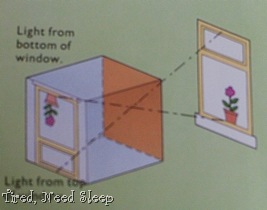
M was very impressed that the trees were upside down, and interestingly enough (totally not planned), our Bible story that morning had been about the blind man that Jesus cured, who first saw the trees upside down. Very cool indeed. So we talked a bit about how great it is that God made our eyes in a special way so that things are turned again and we see everything right side up. That God – He really did think of everything, didn’t he?! :)
Have a beautiful day! :)


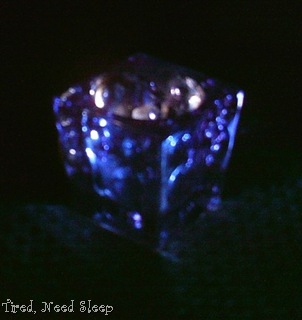

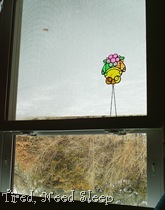

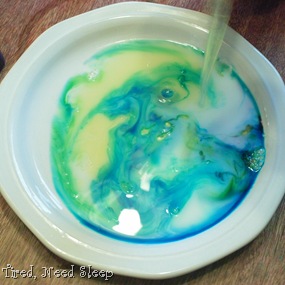
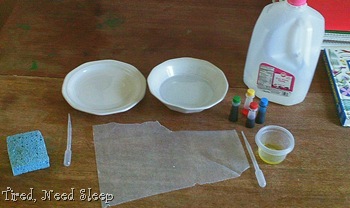
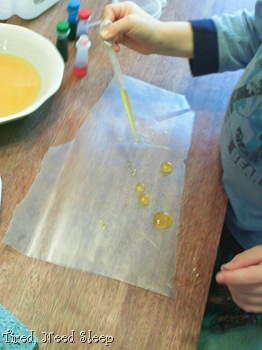
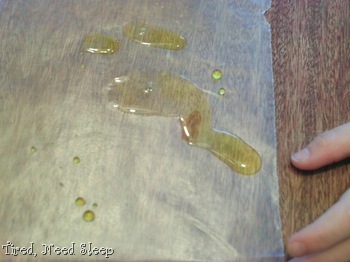
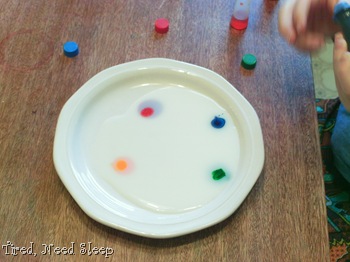
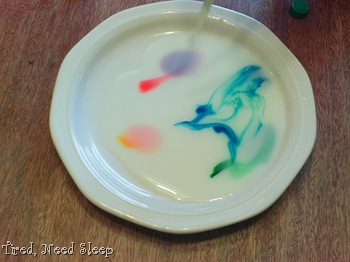

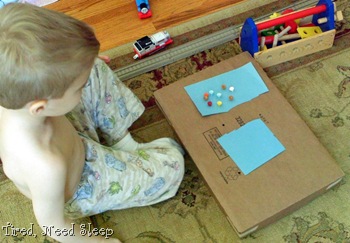
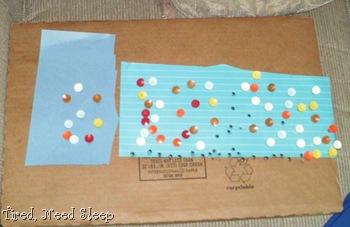
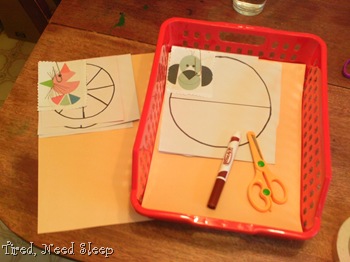
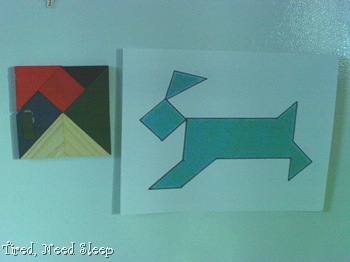
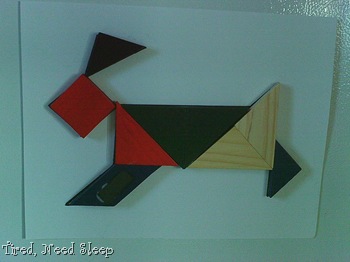 I glued magnetic strips to the backs of the pieces, and used wood glue to make the 4 medium triangles into 2 large triangles like a traditional tan gram set would have.
I glued magnetic strips to the backs of the pieces, and used wood glue to make the 4 medium triangles into 2 large triangles like a traditional tan gram set would have.